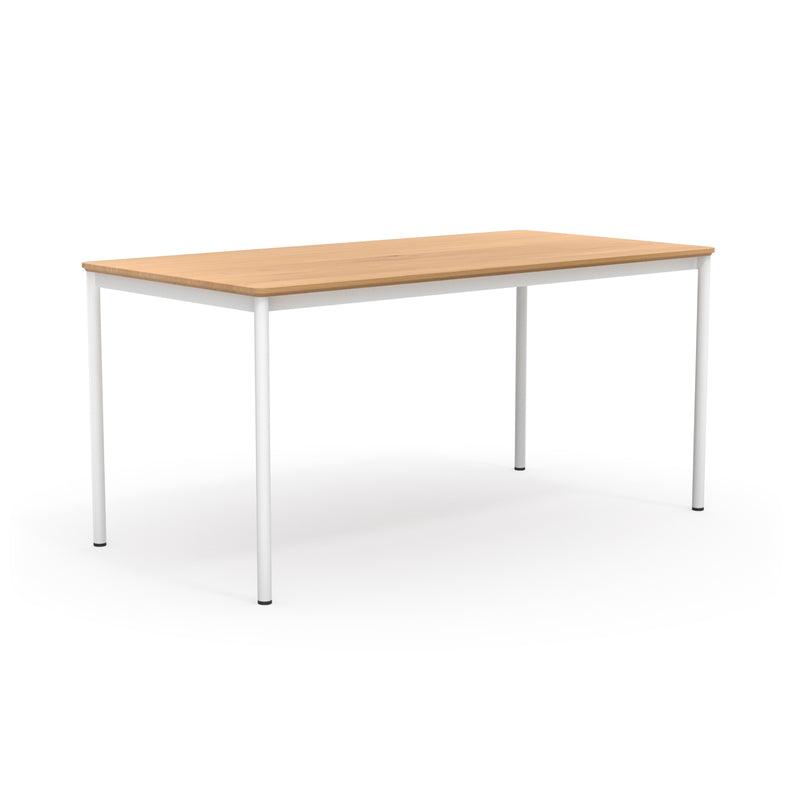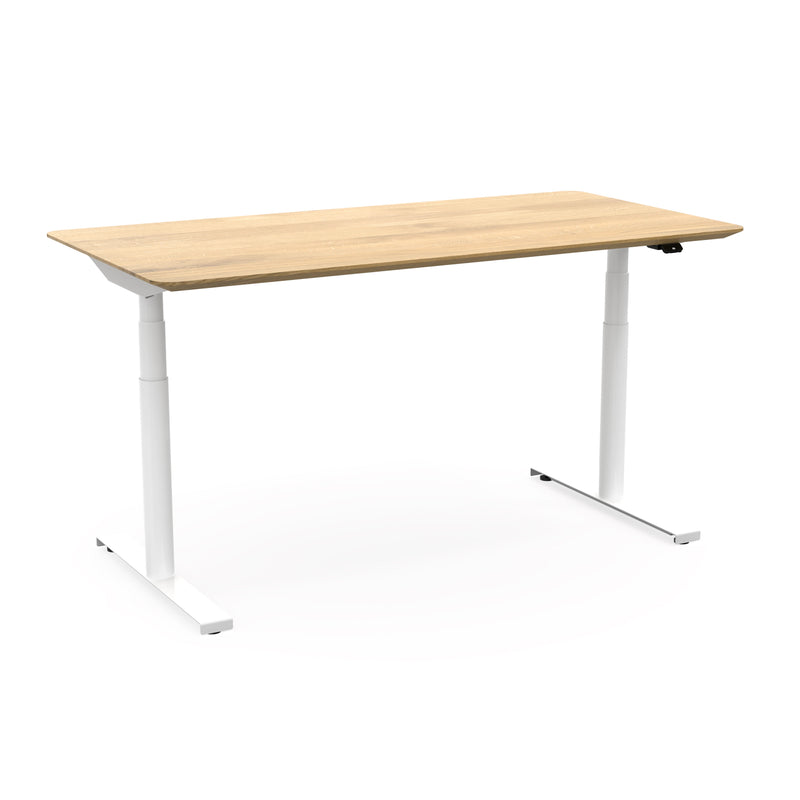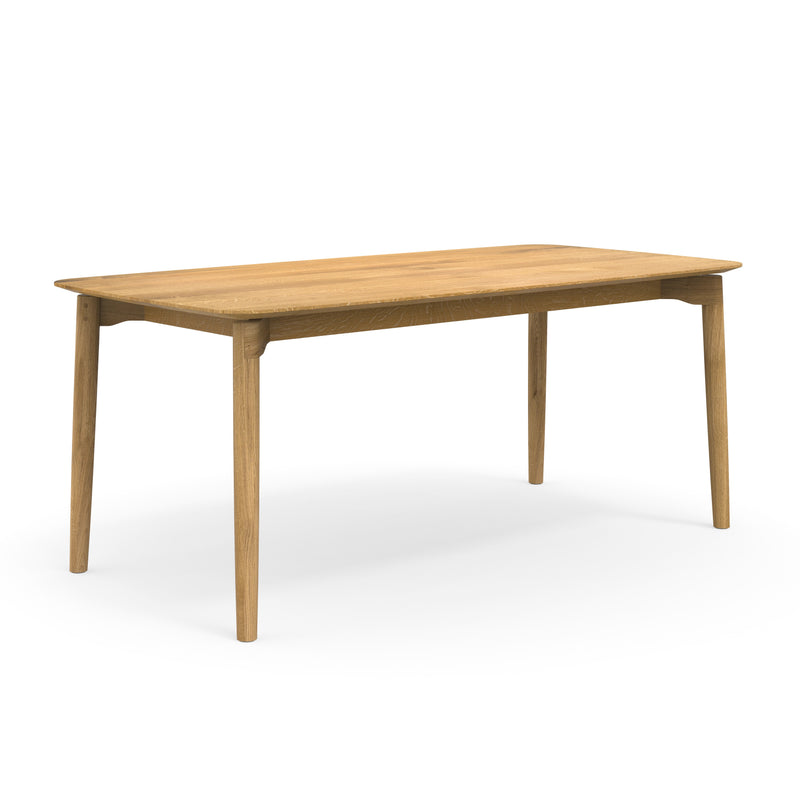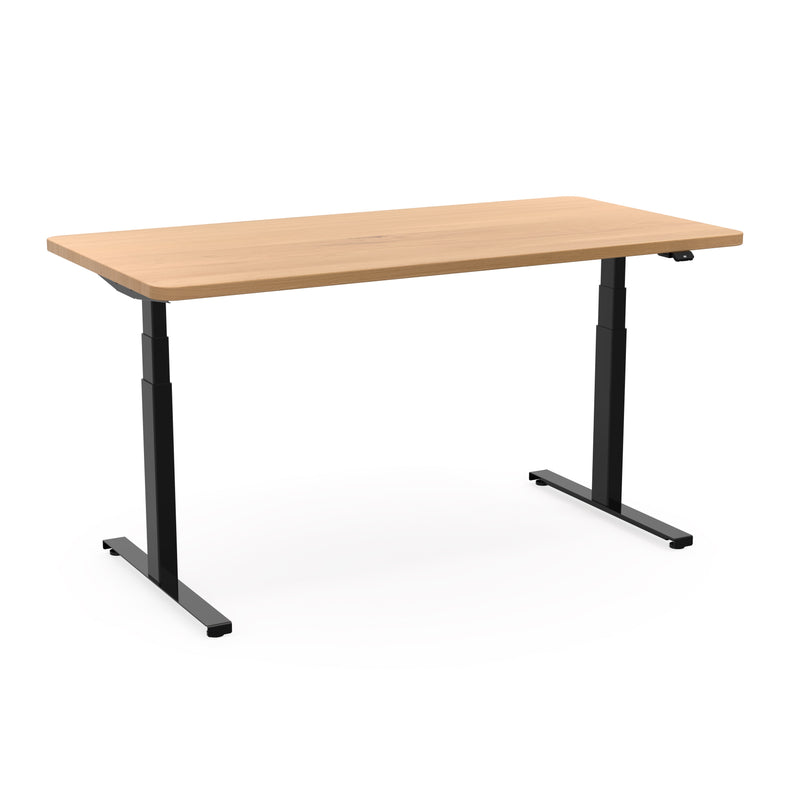Linoleum
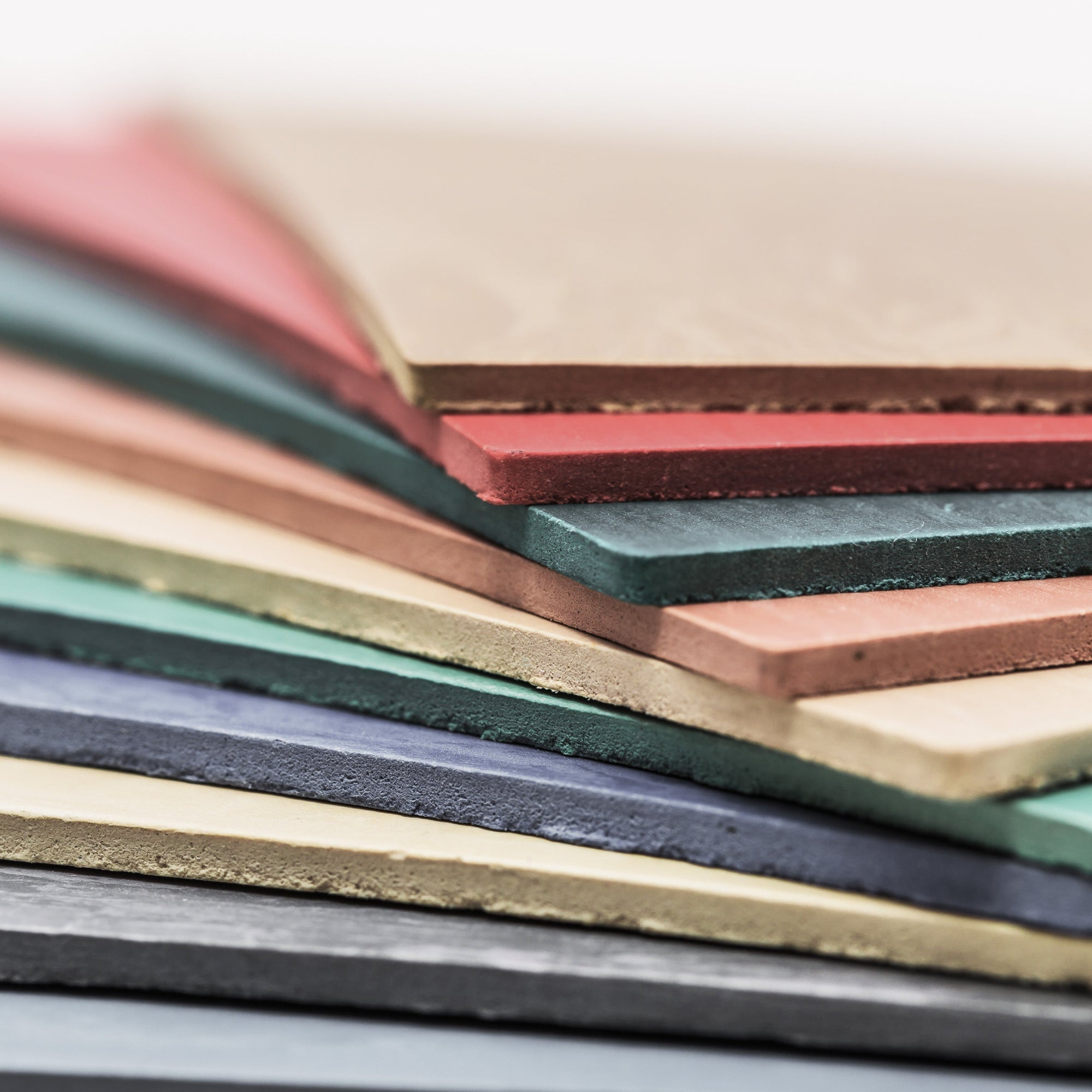
Linoleum is an elastic, natural floor and furniture covering made from linseed oil, cork and wood flour, and jute fabric. It is durable, biodegradable and easy to clean. Linoleum is particularly sustainable because it is made from renewable raw materials – without any synthetic additives and with low environmental impact.
What is linoleum?
Linoleum is a natural material that is used not only as flooring but also in furniture construction – for example, for tabletops, cabinet fronts or work surfaces. It is made from natural raw materials such as linseed oil, wood and cork flour, and jute fabric. Its matte surface and organic feel give the material a warm, pleasant appearance.
The combination of strength and flexibility is typical of linoleum – making it suitable even for curved surfaces. Thanks to its antistatic and hygienic properties, it is easier to maintain and keep clean than many other surfaces, without the need for chemical treatment.
Linoleum in furniture making
In furniture design, linoleum impresses not only with its natural look and pleasant feel but also with its functional properties. Since it is made from raw materials such as linseed oil, wood flour and jute, slight color variations and natural surface irregularities may occur – these are not flaws but emphasize the unique character of the material. As a tabletop, linoleum is particularly resistant to scratches, impacts and fingerprints. Nevertheless, you should avoid placing hot objects directly on the surface and use a cutting mat to ensure long-lasting durability.
Cleaning is simple: a soft, slightly damp cloth and a pH-neutral cleaner are sufficient for everyday use. For extra protection and to refresh the surface, special linoleum care products can be used – helping to preserve its matte, velvety texture in the long term.
How is linoleum made?
The production process of linoleum begins with a mixture of linseed oil, natural resins, wood and cork flour, which are heated together until a viscous mass is formed. If needed, color pigments are added to tint the mixture.
The mixture is then applied in thin layers onto a backing material made of jute fabric and spread evenly.
After that, the linoleum is cured in special drying chambers over several weeks, which gives it its typical strength and elasticity.
Finally, the surface is refined to make the material more resistant to dirt and wear.


Environmental footprint of linoleum
Linoleum is considered an especially eco-friendly flooring material because it is made from renewable raw materials and is biodegradable. But how sustainable is linoleum really?
1. Sustainability of raw material sourcing
The main components of linoleum – linseed oil, cork and wood flour, and jute – come from natural and renewable sources. This makes it resource-friendly and environmentally responsible, especially when compared to similar materials such as vinyl and PVC. The use of by-products from cork and wood processing further improves its environmental performance.
2. Processing and energy consumption
The production of linoleum requires less energy than the manufacture of synthetic flooring such as vinyl or PVC. It also relies on natural materials, and the use of chemicals is not necessary.
However, small amounts of synthetic additives may be used to accelerate the curing process or add protective coatings for improved durability. These vary by manufacturer and are generally used only in minimal quantities.

3. Durability
Linoleum is long-lasting and can endure for several decades with proper care. It is abrasion-resistant, elastic, and resistant to mechanical stress. In high-traffic areas such as schools or hospitals, it is particularly valued for its robustness and hygienic properties.
However, care should be taken with thermal and chemical exposure, as the natural components of linoleum may react sensitively. Its elastic structure can also lead to permanent marks under prolonged or heavy point pressure.
4. Reusability
At the end of its lifespan, linoleum can be recycled or thermally recovered. Since it consists mostly of organic components, it does not leave behind harmful waste. The choice of substrate and adhesive is key here. Alternatively, the surface can be sanded and resealed to extend its usability.
5. Biodegradability
Unlike synthetic coverings, pure linoleum is completely biodegradable. Once disposed of, it decomposes naturally without leaving harmful residues. Attention should also be paid to the adhesives and connectors used when installing linoleum.
Technical properties of linoleum
| Property | Value |
|---|---|
| Total thickness | 2 mm to 7 mm |
| Total weight | 2000 g/m² to 3220 g/m² |
| Flexibility | ø 50 mm |
| Residual indentation | ≤ 0.20 mm |
| Lightfastness | Method 3: Level 6 / Scale |
| Antistatic | 2 kV |
| Chemical resistance | No change in material properties when briefly exposed to diluted acids, oils, and fats. Not resistant to long-term exposure to alkalis. |
| Reflectance | 5 |
| Color | Wide range of color and pattern options |
| Moisture resistance | Limited, not suitable for wet areas |
| Usage | Flooring, tabletops, work surfaces, cabinet fronts |
Linoleum at ekomia
At ekomia, we use linoleum as an optional surface finish for our custom-made tables. This natural product from renewable resources also offers a pleasant, warm feel and is easy to maintain. Our linoleum gives you the chance to add color and personality to your home. This way, we create long-lasting, aesthetic, and eco-friendly solutions for sustainable living and working spaces.

Questions & answers for Linoleum
Here we answer some questions about Linoleum that are frequently asked by other users.
Do you still have any questions?
Do you have any questions or comments on this topic? Write a comment, we will be happy to answer.
